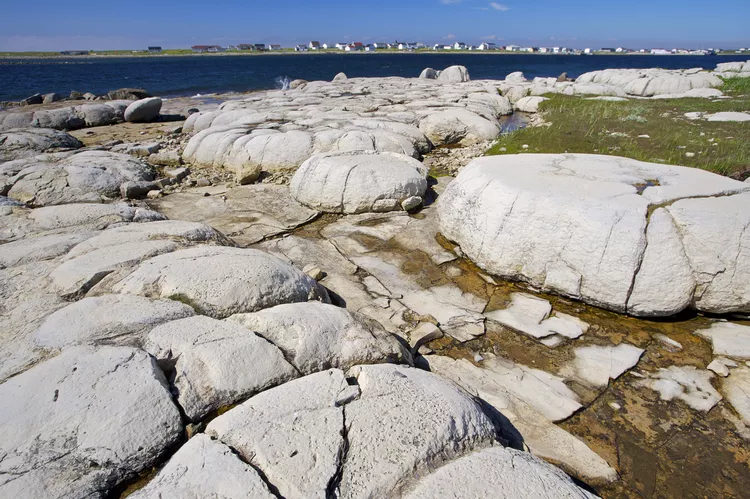Summary
Thrombolites Overview
Flower’s Cove (or Flowers Cove), located on Route 430 in western Newfoundland, is a charming coastal town featuring a remarkable attraction—thrombolites. These unique rock formations were created by microbes in the ancient Iapetus Ocean through photosynthesis. The calcium carbonate from the limestone rocks contributed to the creation of these unusual formations, known as thrombolites.
Generally, thrombolites are several feet wide and resemble an Italian panini rosette roll made of stone. Scientists categorize thrombolites as “clotted” structures since they lack the layered patterns found in strombolites, which originated roughly 3.5 million years ago. Observing thrombolites can leave one pondering how living organisms could absorb ample minerals to form such substantial rocky structures.
Thrombolites are rare and can only be found in a few locations around the world. The thrombolites at Lake Clifton, Australia, bear a striking resemblance to those situated in Flower’s Cove. Most thrombolites here feature a circular center, surrounded by sections resembling curved pie slices. While some formations have deteriorated over the years, numerous intact thrombolites remain for visitors to admire.
Getting There
Stopping by Flower’s Cove provides an excellent opportunity to stretch and explore during your journey on the Newfoundland and Labrador Route 430—either from St. Anthony or near L’Anse aux Meadows heading towards Rocky Harbour.
The trail to the thrombolite formations is short and easy to locate. Upon arriving at Flower’s Cove, visitors can park off Route 430 in a designated pull-off area, which is prominently marked, at the start of the boardwalk leading to Marjorie’s Bridge. The bridge is easily identifiable by its red roof and signage directing towards the thrombolites. Following the boardwalk will lead you to the beach path. Alternatively, you may park near the white church north of the bridge on Route 430 and walk across the grass to the path, turning right until reaching the thrombolites.
The trail comprises a boardwalk traversing marshy lands and a gravel pathway along the shoreline. It is relatively flat, making it easy to navigate. If the weather permits, consider bringing a picnic; there are several picnic tables nearby where guests can enjoy a meal with a scenic view. Importantly, there is no admission fee to access this natural wonder.




